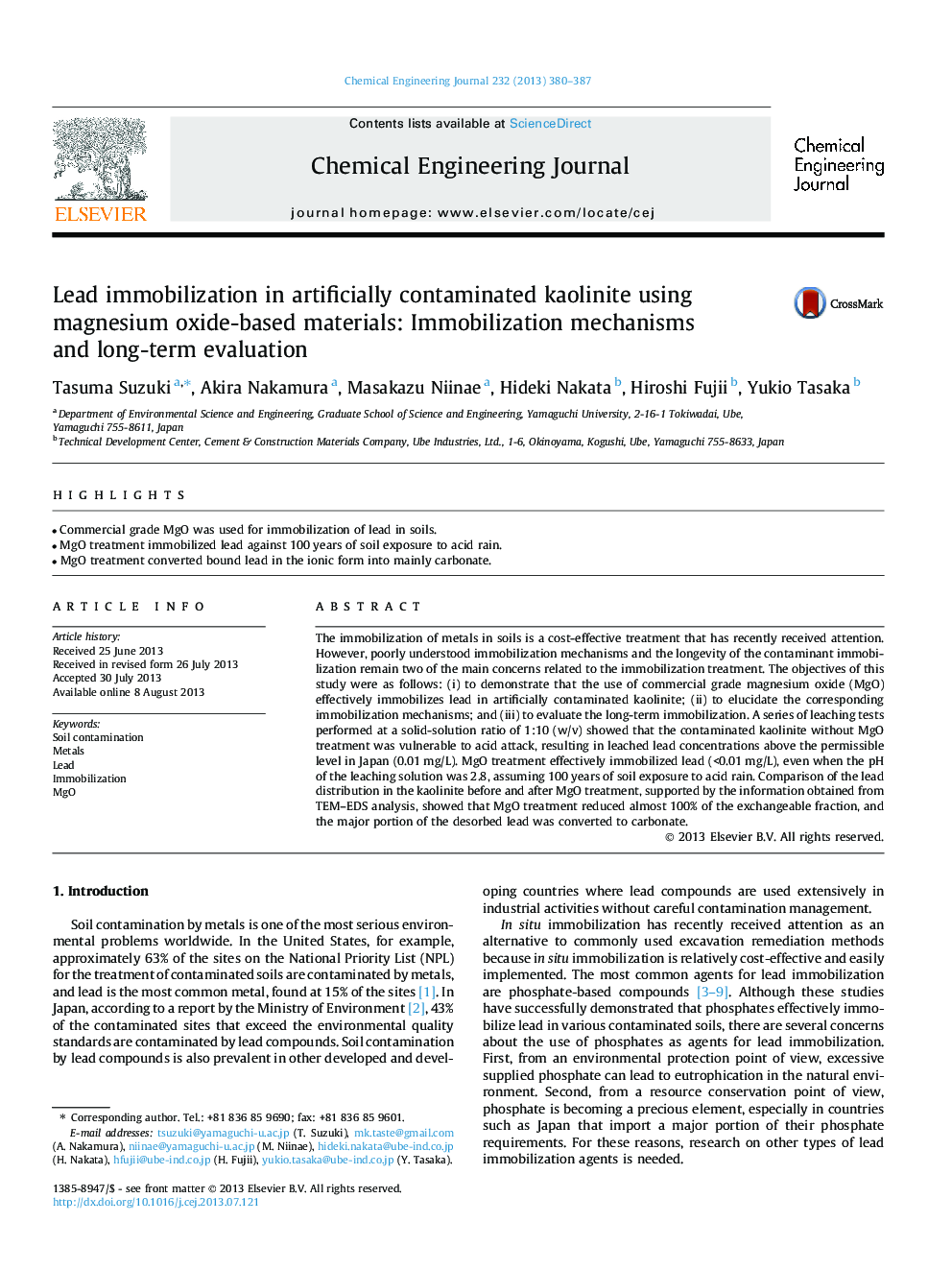| کد مقاله | کد نشریه | سال انتشار | مقاله انگلیسی | نسخه تمام متن |
|---|---|---|---|---|
| 148150 | 456406 | 2013 | 8 صفحه PDF | دانلود رایگان |

• Commercial grade MgO was used for immobilization of lead in soils.
• MgO treatment immobilized lead against 100 years of soil exposure to acid rain.
• MgO treatment converted bound lead in the ionic form into mainly carbonate.
The immobilization of metals in soils is a cost-effective treatment that has recently received attention. However, poorly understood immobilization mechanisms and the longevity of the contaminant immobilization remain two of the main concerns related to the immobilization treatment. The objectives of this study were as follows: (i) to demonstrate that the use of commercial grade magnesium oxide (MgO) effectively immobilizes lead in artificially contaminated kaolinite; (ii) to elucidate the corresponding immobilization mechanisms; and (iii) to evaluate the long-term immobilization. A series of leaching tests performed at a solid-solution ratio of 1:10 (w/v) showed that the contaminated kaolinite without MgO treatment was vulnerable to acid attack, resulting in leached lead concentrations above the permissible level in Japan (0.01 mg/L). MgO treatment effectively immobilized lead (<0.01 mg/L), even when the pH of the leaching solution was 2.8, assuming 100 years of soil exposure to acid rain. Comparison of the lead distribution in the kaolinite before and after MgO treatment, supported by the information obtained from TEM–EDS analysis, showed that MgO treatment reduced almost 100% of the exchangeable fraction, and the major portion of the desorbed lead was converted to carbonate.
Journal: Chemical Engineering Journal - Volume 232, October 2013, Pages 380–387